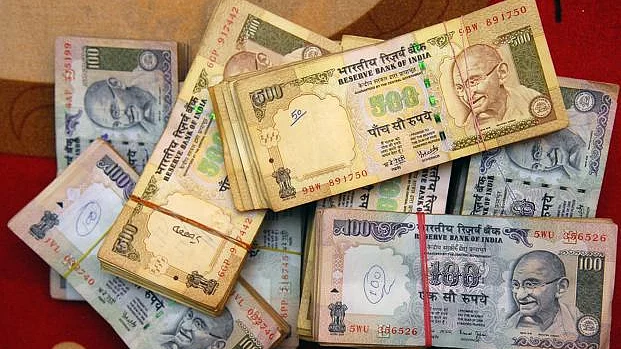Demonetisation: RBI report leaves Modi govt red faced on black money, digital economy
As much as 99.3% of the junked notes have returned to the banks, the RBI says. It means there was only 0.7% of black money in the country or was it converted into white during demonetisation?

The Reserve Bank of India (RBI), which has taken an awfully long time to count the currency that was returned in the limited period window provided by the government to exchange or deposit the demonetised currency, said in its Annual Report for 2017-18 that the exercise is finally over.
The RBI says in its report that as much as 99.3 per cent of the junked ₹500 and ₹1,000 notes have returned to the banking system, the RBI said on Wednesday, indicating that just a minuscule percentage of currency was left out of the system after the government's unprecedented note ban aimed at curbing black money and corruption.
Demonetisation could neither unearth the fake currency nor could encourage digital transaction. Even black money (if it was there) was converted into white in the system.. The annual report of Reserve Bank released on Wednesday has in fact smashed all the arguments of Modi government in favour of demonetisation. RBI has said that more cash is in flow now than it was on November 8, 2016, when demonetisation was announced. Besides 99.3% of banned notes have now returned to RBI.
According to RBI, till March 2018, 18.03 lakh crores has been in circulation. During the past one year, the currency has increased by 37.7%. RBI has said that till March 2017, 72.7% of the total currency in circulation was in form of t ₹500 and ₹2000 notes. But by March 2018 it was 80.2%.
PM Modi had argued that demonetisation will help curbing the fake currency in circulation. In its report, the Reserve Bank has said that the returned money was calculated only after scrutinizing the notes that came back. This means that either the fake notes were not in the system, and if they were, they were too less.
On November 8, 2016, Prime Minister Narendra Modi had announced banning of the notes of 1000 rupees and 500 rupees across the country in an address to the nation at 8 p.m. From the very next day, long queues of anxious people could be seen in front of the banks across the country. And people spent hours standing and waiting to deposit old notes and get the new ones. about 100 people had died standing in the queues.
Announcing note ban, PM Modi had given some arguments in favour of demonetisation. He had said that note ban is being introduced to curb black money, fake currency and to encourage digital transaction and cashless economy so that terrorism could be controlled.
After 21 months of that announcement the RBI has released the data related to demonetisation. At that time the currency worth ₹15 lakh 44 thousand crores in form of ₹500 and ₹1000 was in circulation. These notes were banned. But after 21 months when the RBI completed calculating the returned old notes, it became clear that 99.3% of the 15.44 lakh crores have been returned. This is the money people deposited in the banks legally. That means only 0.7% money was in form of black money which has not been returned or the people who had black money converted it into white by some manipulations.
PM Modi had argued that demonetisation will help curbing the fake currency in circulation. In its report, the Reserve Bank has said that the returned money was calculated only after scrutinizing the notes that came back. This means that either the fake notes were not in the system, and if they were, they were too less.
RBI has issued data on counterfeit notes also. It has said that in 2017-18 5,22,783 notes, in 2016-17 7,62,072 notes and in 2015-16 6,32,926 counterfeit notes were caught. That shows the fake currency is still in circulation.
Not only this, the fake currency which is being caught include notes of ₹100 and ₹50 too, and there has been an increase of 35% and 154.3% in these notes. The counterfeits of the new ₹500 and ₹2000 notes have also been found.
The RBI, in its report has also shown how many scams have taken place in the banks. According to the report, 92.9% scams of more than ₹one lakh have occurred in national banks and 6% have occurred in private banks.
RBI says that there is a high possibility of financial risk in the states where elections are soon going to take place. The central bank has warned the government on the front of inflation. It says that there is a possibility of price rise in coming days and there is a need to prepare and be careful in future regarding this.
Follow us on: Facebook, Twitter, Google News, Instagram
Join our official telegram channel (@nationalherald) and stay updated with the latest headlines
